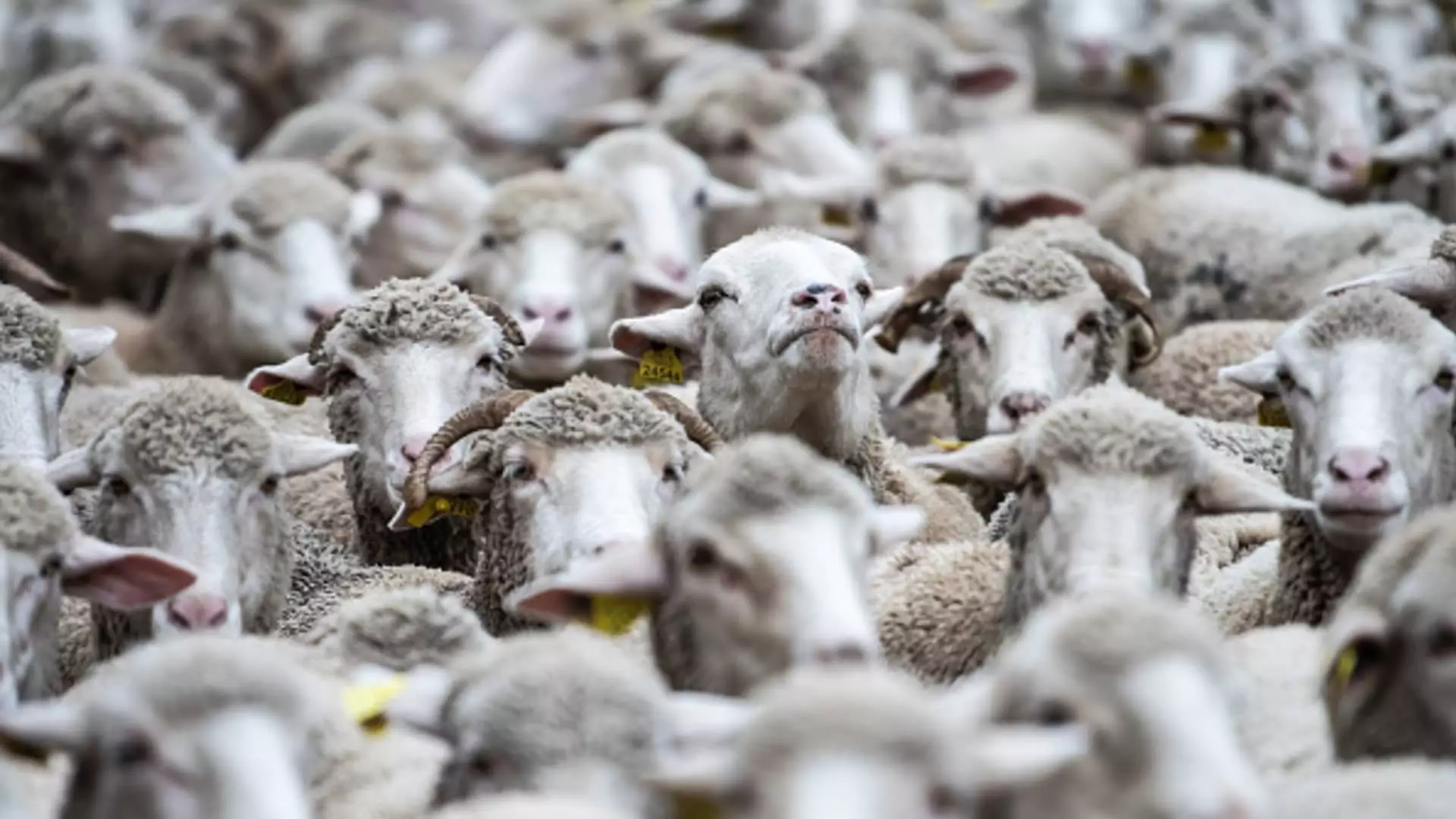Australian farmers are currently facing a major challenge in dealing with an oversupply of sheep, as the mutton market experiences a significant slump in prices. According to data provided by Meat and Livestock Australia (MLA), mutton prices have plummeted by 70% in the past year, reaching a low of $1.23 per kg. This drastic drop in prices can be attributed to several factors, including an increase in the sheep flock and unfavorable weather conditions.
Australia’s Sheep Flock Growth
A key contributing factor to the oversupply of sheep is the significant growth seen in Australia’s sheep flock. Tim Jackson, MLA’s global supply analyst, explains that the country has experienced several very good seasons in recent years, resulting in a sheep flock of 78.75 million head – the largest since 2007. Above-average rainfall in sheep regions, such as New South Wales and Victoria, has provided ideal conditions for the growth of grass, which in turn supports the feeding and breeding of livestock. Consequently, farmers have been motivated to retain sheep on-farm, rather than sending them off for slaughter or to market.
Struggles with Profitability and Animal Welfare
Unfortunately, the oversupply of sheep has led to a sharp decline in profitability for farmers. Many sheep are now at risk of not finding a market, which could ultimately lead to the destruction of these animals. Steve McGuire, vice president of agricultural advocacy group WAFarmers, explains that farmers would prefer to give the animals away rather than cull them, but finding takers for free sheep has proven to be challenging. This surplus of sheep is expected to increase further, with Australia’s sheep flock estimated to expand by 23% from the 100-year low in 2020.
Adding to the challenges faced by Australian farmers is the adverse weather, which has taken a turn for the worse this year. The Australian Bureau of Meteorology reported its driest September on record, and the dry conditions are expected to persist. The bureau predicts that El Nino will continue, accompanied by a strong positive Indian Ocean Dipole (IOD) event, suggesting ongoing hot and dry weather. Due to these conditions, the supply of feed for livestock is expected to decrease, prompting farmers to attempt reducing their flock size.
As farmers strive to reduce their flock, they face another hurdle – an inability to process the high volume of sheep quickly enough. Matt Dalgleish, co-founder of agricultural consulting firm Episode 3, highlights that meat processing facilities are not operating at full capacity, primarily due to labor skills shortages. Additionally, a backlog of unprocessed stock from the previous year further exacerbates the bottleneck at slaughterhouses. The combination of these factors has placed downward pressure on global wholesale prices.
Impact on Retail Prices
While sheep prices have experienced a significant decline, this reduction has yet to be fully reflected in retail prices. Despite the oversupply of sheep, consumers may not see a drastic decrease in the cost of lamb products at supermarkets. Woolworths Group, a major Australian supermarket chain, has announced a 20% price cut for lamb products, but this may not be representative of the entire retail market. However, as the backlog of sheep meat clears, it is likely that consumers, both domestically and internationally, will eventually witness more significant price decreases in mutton.
Potential Shift in the Market Landscape
Some farmers are considering alternative strategies to reduce costs, such as not mating their ewes. This decision may inadvertently lead to a decrease in the number of young sheep, potentially shifting the oversupplied market landscape to one of undersupply. The consequences of such a shift could be felt relatively quickly, affecting both farmers and consumers.
Farmers’ Outlook and Concerns
A recent survey conducted by the National Farmers Federation revealed that over 60% of Australian farmers do not feel positive about the future of farming compared to a year ago. The challenges presented by the oversupply of sheep, coupled with unfavorable weather conditions, have created an uncertain outlook for the industry. As farmers continue to grapple with low prices and decreasing profitability, it remains to be seen how the Australian sheep market will evolve in the coming months and years.
The oversupply of sheep in Australia has created significant challenges for farmers. Decreasing mutton prices, unfavorable weather conditions, and processing bottlenecks have all contributed to a difficult situation. While retail prices have not yet fully reflected the drop in sheep prices, it is expected that consumers will eventually see more significant discounts. The potential shift from oversupply to undersupply in the market, coupled with farmers’ concerns about profitability, further adds to the complexity of the situation. As the industry navigates these obstacles, it is essential for all stakeholders to work together to find sustainable solutions for the future of Australia’s sheep farming sector.


Leave a Reply